Frank Lloyd Wright – He Wore A Cape
by David Fox
Famous architect, writer, designer, and educator Frank Lloyd Wright was born in June of 1867. He was a pioneer for the architectural movement of the 20th century, and he was the founder of organic architecture.

He would create over 1,000 structures over 70 years. His work called Fallingwater in 1935 was considered “the best all-time work of American architecture.” He continues to inspire architects today.
“The mother art is architecture. Without an architecture of our own, we have no soul of our own civilization.”

His Work
Wright has an extensive catalogue of impressive creations, but Prairie School, Taliesin Fellowship, Fallingwater Residence, and the Guggenheim Museum are among the most famous.
Prairie School Architecture
In 1888, Wright began working closely with Louis Sullivan at an apprenticeship with Adler and Sullivan’s Chicago architectural firm.
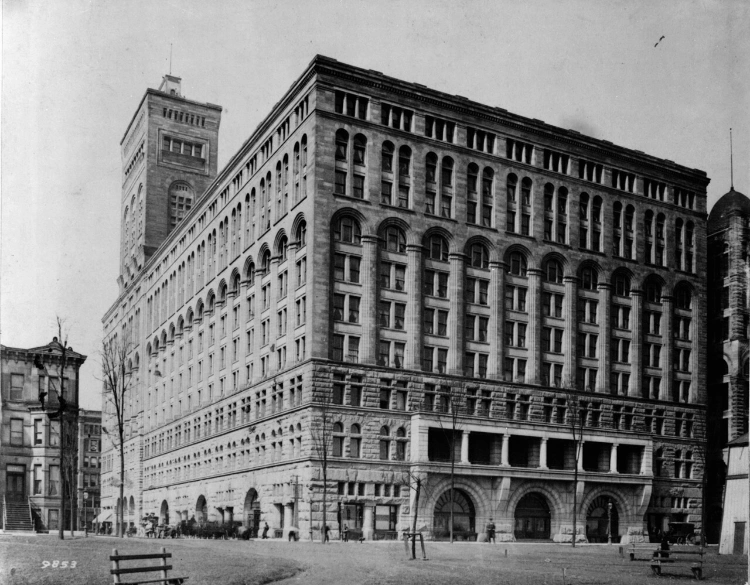
Louis Sullivan was known as the “Father of Skyscrapers,” and he preferred a cleaner aesthetic than the European styles that were popular at that time.
His maxim was “form follows function,” and Wright took inspiration and influence from this, and he would eventually carry on Sullivan’s dream of creating an American style of architecture.
He would work with Sullivan until 1893 when he ultimately breached their contract.
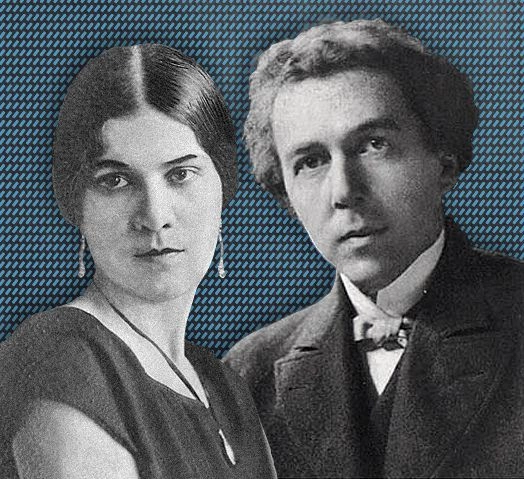
In 1889, the 22-year-old Wright would marry and develop a home in Chicago’s Oak Park community, and this is considered his first masterpiece.
In 1893, he designed the Winslow House in River Forest, which is considered the first example of his distinct organic architectural style.
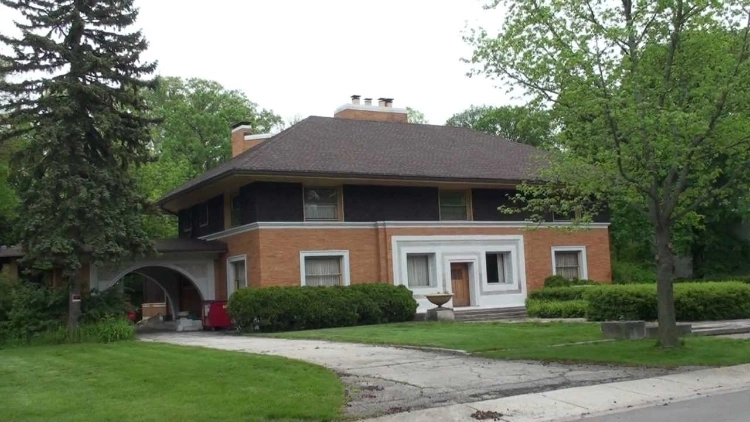
He would go on to develop a series of residences and public buildings, which became known as the Prairie School of architecture.
The single-story homes had distinct features, like long rows of casement windows, locally-sourced materials, and low-pitched roofs.
The design emphasized natural beauty and was indicative of the style that would be what Wright is known for. Some of the most famous Prairie School buildings are the Unity Temple in Oak Park and Robie House in Chicago.
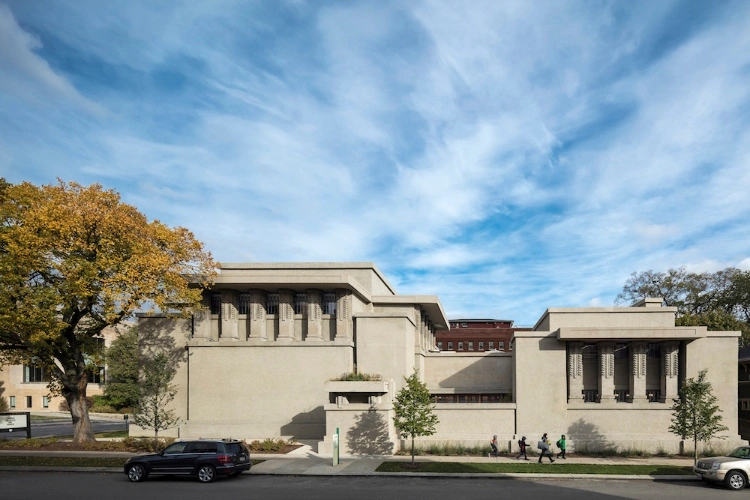
Taliesin Fellowship
After 20 years of marriage, Wright abruptly abandoned his wife and children and moved to Germany with the wife of one of his clients in 1909.
In 1913, he would return to the United States and create Taliesin, home on his ancestors’ land in Spring Green, Wisconsin.
It was his most acclaimed design out of all of his work, but it was short-lived, as in 1914, a servant of his set the home on fire, killing seven innocent people, including his partner.
While he was devastated, he immediately began to rebuild. In 1915, he was commissioned by the Japanese Emperor to design the Imperial Hotel in Tokyo.
This project took seven years, and he created a revolutionary building that was earthquake-proof.
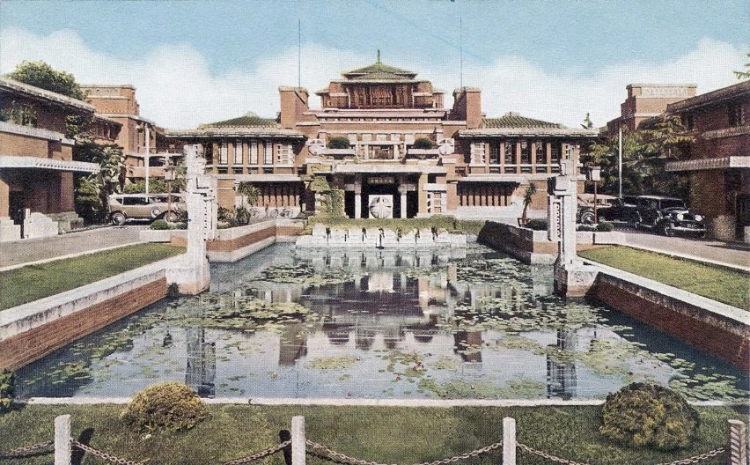
Unfortunately, this was tested by the Great Kanto Earthquake of 1923, which devastated the city, but the hotel was left standing.
His rebuild of Taliesin was destroyed in 1925 by an electrical fire, which forced Wright to rebuild it once again.
In 1932, during a slow period for architectural commissions, he founded the Taliesin Fellowship, which was an architectural school based out of his home.
Five years later, his students began to create Taliesin West, a residence in Arizona for the school in the winter months.

Fallingwater Residence
Around the age of 70, Wright was essentially retired and teaching at the Taliesin Fellowship when he decided to create one of his career’s most celebrated works.
Fallingwater was designed for the Kaufmann family in Pittsburgh, and the building was incredibly designed with a waterfall that has cantilevered balconies and terraces over top of it.
It’s considered a national landmark and one of the most beautiful homes ever built.
Guggenheim Museum
The design of the Guggenheim Museum took Wright 16 years, and he started in 1943.
While it was controversial, the cylindrical while building that spirals upward into a dome is now considered one of the finest buildings in NYC.
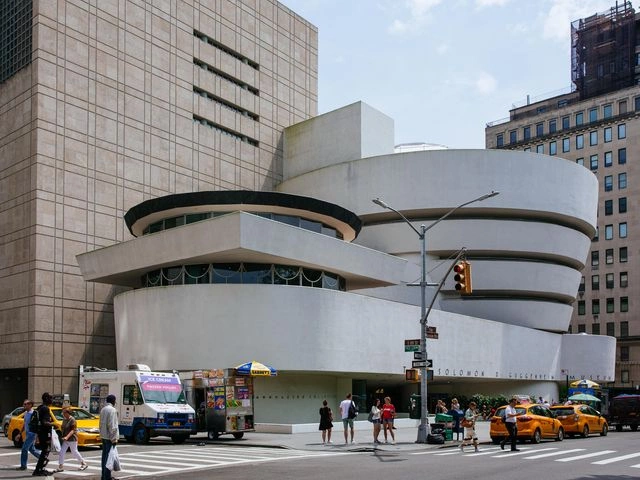
“Every great architect is – necessarily – a great poet. He must be a great original interpreter of his time, his day, his age.”
His Legacy
Wright’s legacy goes far beyond his death in 1959, as he is still an incredible influence in the art and architecture worlds.
Once he passed, his apprentices finished his remaining commissions, one of which was the County Civic Centre in California, which is considered one of his most notable works.
The Frank Lloyd Wright Foundation and the Frank Lloyd Trust are two organizations that work to preserve Wright’s extant buildings.
His archive of drawings has been divided between the Museum of Modern Art and the Avery Architectural Library at Columbia University in New York City. His writings are stored at Taliesin West.

His legacy of being the most significant American architect has been cemented.
He created buildings of every different style, hundreds of homes, ten apartment buildings, seven churches, five apartment complexes, four schools, three hotels, three corporate headquarters, two banks, two gas stations, two doctors offices, a warehouse, an art museum, and a college campus.
His work has inspired young architects who have an incredible impact on the discipline and so much more. The Museum of Modern Art has dedicated more one-person shows to Wright than any other architect.

Wright has been depicted in several pop culture works. The Fountainhead by Ayn Rand has a main character loosely based on Wright, and the subsequent movie starred Gary Cooper.
There are rumours of Fallingwater Rising by Franklin Toker becoming a feature film. The book documents Wright’s history and most famous building.
The novel Loving Frank, the Wright 3, and The Women, the opera Shining Brow are all connected to Wright.
Simon and Garfunkel produced the song “So Long, Frank Lloyd Wright,” written by Simon upon request from Garfunkle even though he admitted to not being very aware of Wright and his work.
The song was included on the Bridge Over Troubled Water album.
While this part of his legacy is impressive, it’s uncertain how his personal legacy will be perceived. His works are still relevant, but his attitude about his work became a bit elitist over time.
His ego often got in the way of his relationships, including his most treasured ones, as he did not often view others as equals. Many biographers characterize Wright as a child who refused to grow up.

“Simplicity and repose are the qualities that measure the true value of any work of art.”
Sources:
https://en.wikipedia.org/wiki/Frank_Lloyd_Wright
https://www.theartstory.org/artist/wright-frank-lloyd/life-and-legacy/
https://www.biography.com/artist/frank-lloyd-wright
More on Frank Lloyd Wright

About David Fox
David Fox is an artist who created davidcharlesfox.com to talk about art and creativity. He loves to write, paint, and take pictures. David is also a big fan of spending time with his family and friends.
Leave a Reply
 |
 |
 |
 |
Now get FREE Gifts. Or latest Free phones here.
Disable Ad block to reveal all the secrets. Once done, hit a button below
 |
 |
 |
 |